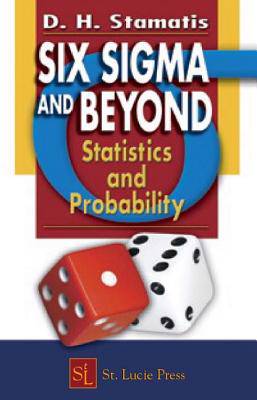
Bedankt voor het vertrouwen het afgelopen jaar! Om jou te bedanken bieden we GRATIS verzending (in België) aan op alles gedurende de hele maand januari.
- Afhalen na 1 uur in een winkel met voorraad
- In januari gratis thuislevering in België
- Ruim aanbod met 7 miljoen producten
Bedankt voor het vertrouwen het afgelopen jaar! Om jou te bedanken bieden we GRATIS verzending (in België) aan op alles gedurende de hele maand januari.
- Afhalen na 1 uur in een winkel met voorraad
- In januari gratis thuislevering in België
- Ruim aanbod met 7 miljoen producten
Zoeken
€ 297,45
+ 594 punten
Uitvoering
Omschrijving
Researchers and professionals in all walks of life need to use the many tools offered by the statistical world, but often do not have the necessary experience in both concept and application. No matter what your profession, sooner or later numbers need to be crunched, and often you need to understand how to do it, and why it is important. Quality control is no different. Six Sigma and Beyond: Statistics and Probability covers the concepts of some useful statistical tools, appropriate formulae for specific tools, the connection of statistics to probability, and how to use them. This volume introduces the relationship of statistics, probability, and reliability as they apply to quality in general and to Six Sigma in particular. The author brings the theoretical into the practical by providing statistical techniques, tests, and methods that the reader can use in any organization. He reviews basic parametric and non-parametric statistics, probability concepts and applications, and addresses topics for both measurable and attribute characteristics. He delineates the importance of collecting, analyzing, and interpreting data not from an academic point of view but from a practical perspective. This is not a textbook but a guide for anyone interested in statistical, probability, and reliability to improve processes and profitability in their organizations. When you begin a study of something, you want to do it well. You want to design a good study, analyze the results properly, and prepare a cogent report that summarizes what you've found. Six Sigma and Beyond: Statistics and Probability shows you how to use statistical tools to improve your processes and give your organization the competitive edge.
Specificaties
Betrokkenen
- Auteur(s):
- Uitgeverij:
Inhoud
- Aantal bladzijden:
- 368
- Taal:
- Engels
- Reeks:
Eigenschappen
- Productcode (EAN):
- 9781574443127
- Verschijningsdatum:
- 28/08/2002
- Uitvoering:
- Hardcover
- Formaat:
- Genaaid
- Afmetingen:
- 154 mm x 228 mm
- Gewicht:
- 684 g

Alleen bij Standaard Boekhandel
+ 594 punten op je klantenkaart van Standaard Boekhandel
Beoordelingen
We publiceren alleen reviews die voldoen aan de voorwaarden voor reviews. Bekijk onze voorwaarden voor reviews.









